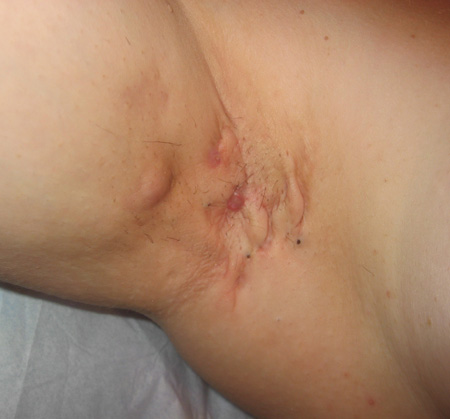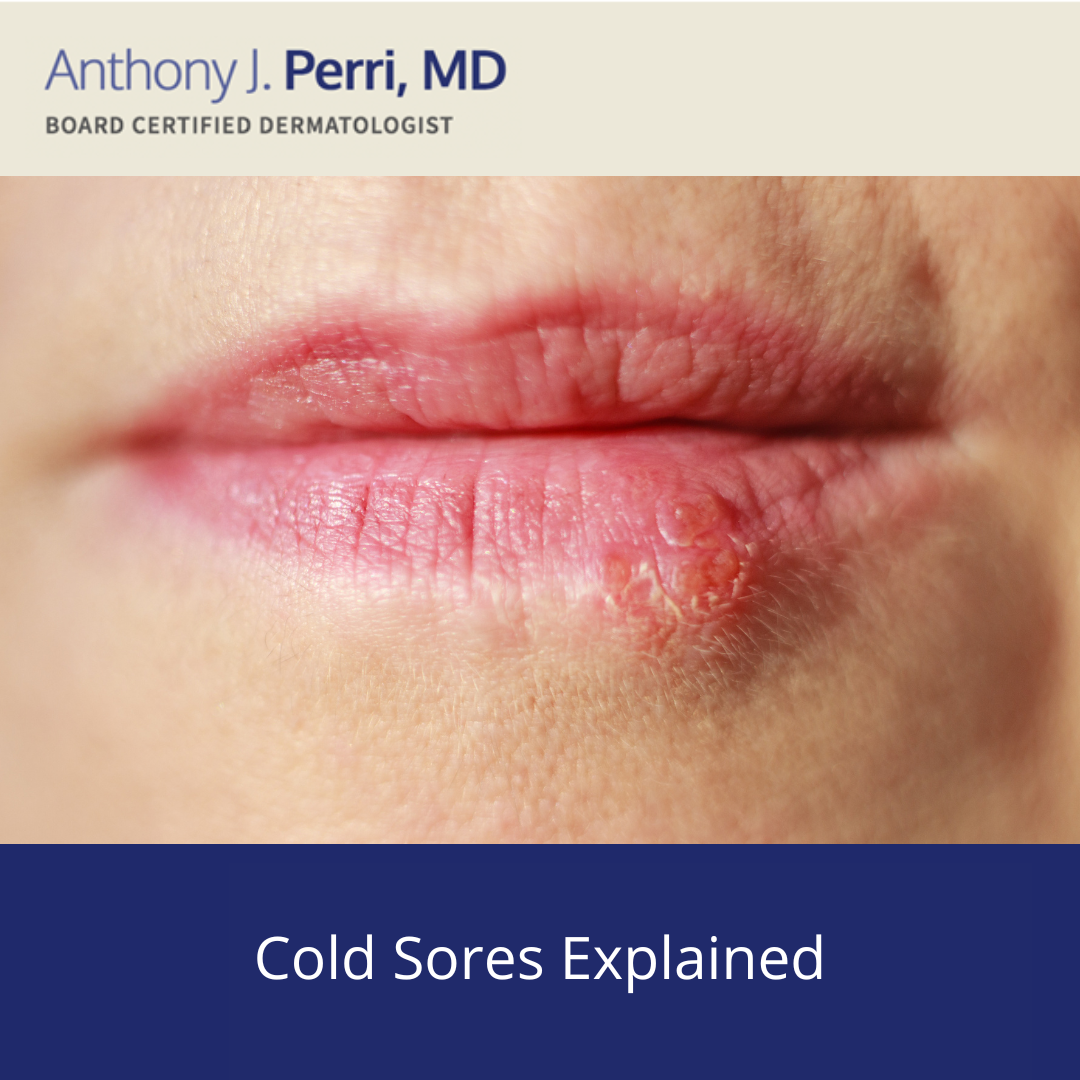Hidradenitis Suppurativa is an acneiform disease that is rather rare and I encounter it very frequently in both my the Woodlands dermatology and Conroe dermatology offices. Hidradenitis suppurativa involves the hair follicular unit and begins with thickening of the hair follicle called follicular hyperkeratosis. This plugs the hair follicle and causes it to rupture spilling bacteria, sebum (oil), keratin and hair into the surrounding dermis. These are treated as foreign bodies by the dermis (second layer of skin) and the immune system mounts an inflammatory response to these “foreign” components resulting in abscesses that form into draining sinuses, which ultimately engulf the apocrine glands (odor glands). These sinuses connect to the surface of the skin and drain a purulent discharge almost continuously. Patients with hidradenitis suppurativa usually do not manifest any signs or symptoms of the disease until after puberty and women are four times more likely to be as affected as men. The affected areas tend to be the intertriginous folds such as the axillae (under arms), groin, perianal area, umbilicus, inframmamary area, and the neck. There is a genetic component to hidradenitis suppurativa but environmental factors such as smoking, hyperandrogenism, and obesity can exacerbate the disease. Unfortunately, there is no cure and treatment is very difficult. I typically prescribe a long term antibiotic such as doxycycline or minocycline to diminish the secondary colonization of bacteria. Patients with active disease can be seen routinely for intralesional kenalog injections, which help minimize the inflammation. Maintaining good hygiene is also very important. Some patients elect to have surgery in which the sinus tracts are marsupialized open but this only provides temporarily relief as new tracts will inevitably form.
September 30, 2010




